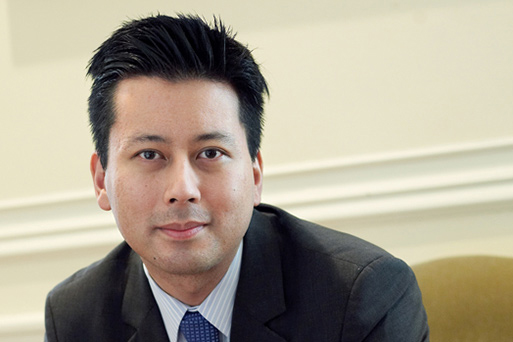In the wake of repeated incidents of police brutality and inequitable treatment of Black and brown communities through a global pandemic, a national outcry for anti-racist education led many law schools to reinvest in diversity, equity, and inclusion work. For Professor Kenji Yoshino, the Chief Justice Earl Warren Professor of Constitutional Law at NYU School of Law and the director of the Center for Diversity, Inclusion, and Belonging, this work is not new, but his recent study examining how law schools cultivate a culture of “covering” is an eye-opening, self-reflective call to action for legal academia at large.
“Covering occurs when you’re either unable or unwilling to hide [your] identity but nevertheless you feel this kind of headwind or pressure to tone down, to mute, to modulate, to edit your identity so it’s more acceptable to the people around you,” Yoshino explained at a virtual panel discussion on February 23 organized by the Boston College Law Student Association’s Diversity and Inclusion Committee and sponsored by DLA Piper.
Professor Yoshino unveiled new research showing how prevalent covering is at law schools. According to his latest survey, 75 percent of participants report covering in some capacity, with the Black individuals reporting at even higher levels, at 86 percent. Yoshino also noted that even straight white men, a group considered to be a “dominant cohort” in law school and other higher education spaces, reported covering, though to a lesser degree, at 53 percent.
Not all covering is necessarily bad, Yoshino said, but covering that occurs based on one’s identity whether it be race, ethnicity, gender, sexual orientation or disability, can come at a cost for individuals who may have to choose between professional advancement and personal authenticity.
Racial minorities are pressured to subscribe to the dominant white culture by changing their names, languages, or cultural practices. Women are given “stylistic” feedback about their vocal tone and professional attire. LGBTQ+ folx are asked not to engage in public displays of queer affection and to “let it go” when individuals misgender them or use the incorrect pronouns. Disabled individuals are told not to draw attention to tools or instruments they need to go about their daily lives.
“We talk a really good game about diversity and inclusion to the point where this has become just a bi-word in our academic spaces and our workplaces. But too often when we talk about diversity and inclusion, we are often referring to diversity or inclusion,” Yoshino warned. For law schools seeking to commit to DEI work, this distinction matters.
“We, along with DLA Piper, brought Professor Yoshino to show the BC community that the LSA D&I Committee believes in diversity and inclusion, not diversity or inclusion,” LSA Diversity and Inclusion Committee Co-Chair Veronika Waldinger said. “It was also important for us to educate the BC Law community on the prevalence and weight of covering, recognize that it’s a burden many carry on a daily basis, but is also one that we can all act on to make lighter by enabling a more inclusive environment where individuals feel less need to cover their authentic selves.”
For an additional observation on cancel culture read the opinion of student Tatiana Becker in BC Law: Impact.


